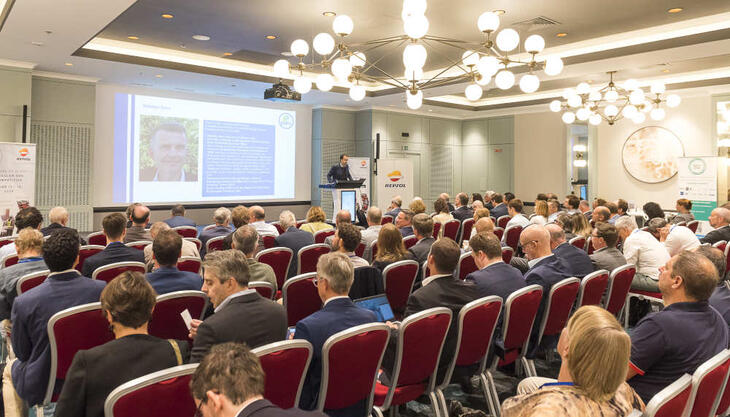Amaplast assembly: record revenue for the industry and a new federation project takes off

On Thursday, 6 June 2024, Villa Arconati hosted the annual Members Assembly of Amaplast - the national trade association affiliated with Confindustria representing approximately 170 manufacturers of machinery, equipment, and moulds for plastics and rubber. On this occasion, the association’s leadership was renewed with the election of new members:
- General Council, with the election of Luna Artico (Friul Filiere), Alessandro Balzanelli (FB Balzanelli), Michele Bandera (Bandera), Alessandra Bosco (Inglass), Gianfranco Cattapan (Plastic Systems), Maria Grazia Colombo (BFM), Giovanna Franceschetti (Gefran), Gianni Luoni (Elba), Fabiola Plebani (Mast) for the 2024-2026 term;
- Board of Arbitrators, with the election of Erica Canaia (Fimic), Carlo Cominelli (Itib Machinery), Andrea Fantozzi (Moss), Valeria Giacomoni (Sica), Aldo Zaffaroni (Zaffaroni) for the 2024-2028 term;
- Board of Auditors, with the election of Gianni Cazzulo (chartered accountant), Claudia Cribiù (Crizaf), Roberta Rivi (Rivi Magnetics) for the 2024-2028 term.
During his speech, President Massimo Margaglione made remarks about the performance of the Italian industry of machinery, equipment, and moulds for plastics and rubber. Drawing on data from the association’s research centre, he observed that, despite a challenging global environment, the sector had seen growth of 2.8% in 2023. Although this increase was less pronounced than in the previous two years, it brought the value of production to a record 4.8 billion euros. Exports remain the main driving force with an 11% increase compared to 2022, solidifying Italy’s position as the world’s third-largest exporter, following China and Germany.
The assembly endorsed their commitment to the federative project that led to the founding of Confindustria Machinery Federation, for ceramics, wood, plastics and rubber, and packing and packaging. Alongside Amaplast, this federation includes Acimac - Association of Italian Manufactures of Machinery and Equipment for Ceramics - Acimall - Italian Woodworking Technology Association - and Ucima - Italian Packaging Machinery Manufacturers’ Association. The goal is to pool the skills and experiences of each association to expand and further improve the quality of the services offered to member companies. The newly formed Federation represents over 1,300 companies, with a workforce approaching 70,000 employees, and a total revenue surpassing 19 billion euros.
Vice Presidents Gabriele Caccia and Barbara Ulcelli recapped the initiatives undertaken by Amaplast over the past year, with particular emphasis on the Plast 2023 fair. They also provided details regarding upcoming plans, highlighting the preparations for Greenplast 2025 (Milan, 27-30 May 2025, once again as part of The Innovation Alliance).

Mario Maggiani, on the left, president
and managing director of Amaplast
respectively.
In closing, journalist, author, and columnist for “Il Corriere della Sera” Federico Rampini delivered a speech outlining the macroeconomic and political trends shaping the global landscape, with a focus on conflicts, upheavals, risks, and opportunities.
Concerning the sectoral overview according to the analyses conducted by the MECS-Amaplast research centre, the Italian industry for machinery, equipment, and plastics and rubber moulds closed 2023 with growth of 2.8% despite the challenging global context marked by conflicts, inflationary pressures, and high interest rates. This increase, though more modest compared to that of the preceding two years, propelled production to an unprecedented record of 4.8 billion euros.
Despite economic and commercial uncertainties across various geographical regions, which worsened in the last quarter of the year, the performance of the sector remained positive, driven primarily by exports. Said exports saw a remarkable growth of nearly eleven percentage points compared to 2022. Italian manufacturers of plastic and rubber machinery experienced particularly strong sales in key markets such as the European Union (+9% over 2022), North America (+18%), and Asia (+8%, with the Middle East up by 50% and the Far East down by 1%). Though with smaller shares, South America also registered a 23% increase.

and author.
In the top ten export markets for Italian manufacturers, notably positive results have been observed in France, Spain, and Romania, as well as in Mexico and Turkey. Only Poland and India showed declines, despite both having enjoyed very favourable trends in previous periods.
The comparison with Germany and China - Italy’s two main competitors - reveals that their respective exports of machinery for plastics and rubber registered increases of 7.5% and 12.9% compared to 2022. Even when looking at the past decade, Italy’s performance lies somewhere between that of its two primary competitors, totalling an average of 3.5%, compared to Germany’s 2.9% and China’s 9%.
However, it is undeniable that the commercial pressure from China has been steadily intensifying over the past decade across all major geographical regions. At Chinaplast, held from 23 to 26 April, it was all the more evident that Chinese technology is advancing at a quick pace. This serves as an impetus for Italy to leverage its unique ability to develop increasingly innovative, flexible, and naturally performing solutions – also in terms of energy efficiency.

The 2023 financial report for Amaplast member companies is in line with that of the entire sector: the association noted a revenue growth of 2.4% - not as strong as the one registered over the previous two years, but significant still. Additionally, there was a modest increase (1.1%) in the workforce. While core-machinery (primary processing equipment) production has registered a slowdown, the production of auxiliary and downstream equipment, components, and moulds has continued to show a significant increase.
As mentioned, the trend among the sector - mirroring that of the industry generally and the capital goods sector - cooled down over the final months of 2023 but more encouraging signs were observed in April and May. Nevertheless, forecasts for the upcoming months are rather cautious: many companies will find it challenging to achieve further growth, and a period of stabilization and transition is to be expected. Domestic demand, in particular, may remain weak due to uncertainties surrounding the effective implementation of Transizione 5.0 measures.
President Margaglione expressed his thoughts on the matter: “A justified sense of concern has spread among entrepreneurs of the sector, but I for one am optimistic: not because it is philosophically better to speak of the good rather than the bad, nor because of that corporate mindset that sometimes tells us to conceal negativity, but because, despite our flaws and shortcomings, we never fail to showcase truly exceptional ingenuity thanks to our unparalleled creativity, our vigorous entrepreneurship, and an extremely diverse and dynamic business fabric.”


















